In India, groundnut farming is a source of income for many. To boost profits, it’s essential to choose the right groundnut varieties. There are hybrid cultivars that offer high yields, increasing your earnings. These hybrids have been developed through careful crossbreeding, blending the best traits of different groundnut plants.
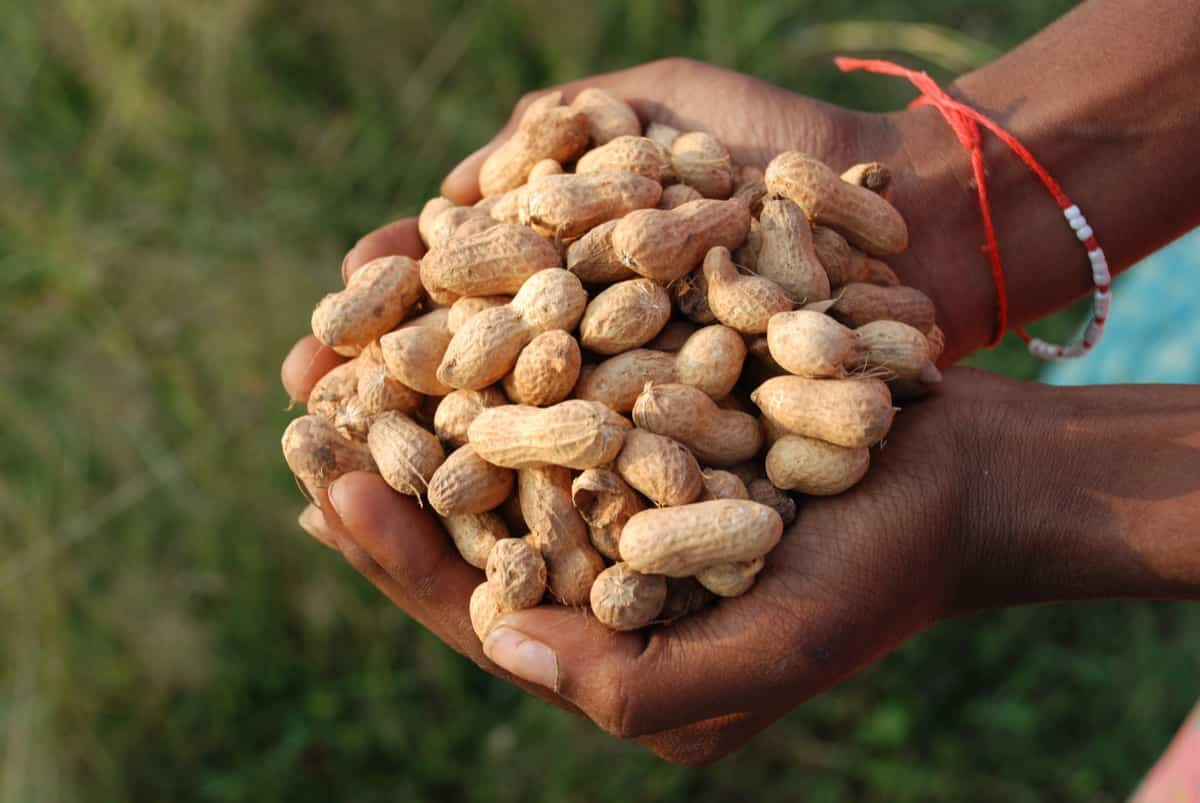
They are resistant to diseases, ensuring a healthy harvest. Moreover, they have a shorter maturity period, allowing for multiple crops yearly. By selecting these high-yielding hybrid varieties, Indian farmers can significantly improve their income, making their groundnut farming more profitable.
Best Varieties of Groundnut in India
TG-39, released in 2008 by Raj AU, Bikaner, is suitable for the arid and semi-arid regions of Rajasthan. It offers a yield potential of 2054-3154 Kg/ha.
TG 51, introduced in 2008 by BARC, Mumbai, is ideal for West Bengal, Odisha, Jharkhand, and Assam. It’s known for its tolerance to stem rot and root rot, making it suitable for the rabi-summer season.
Ajeya (R 2001-3): Ajeya (R 2001-3), from 2008, released by UAS, Raichur, is resistant to PBND, drought-tolerant, and recommended for the kharif season. It thrives in South Maharashtra, Karnataka, Andhra Pradesh, and Tamil Nadu.
Girnar 2: Girnar 2 (PBS-24030), released in 2008 by NRCG, Junagadh, is suitable for Uttar Pradesh, Punjab, and northern Rajasthan. It’s a Virginia bunch type with bold seeds and tolerance to rust, LLS, and PSND.
ICGV 00348: ICGV 00348, released in 2008 by TNAU, Vridha chalam, is ideal for South Maharashtra, Karnataka, Andhra Pradesh, and Tamil Nadu. It’s tolerant to late leaf spot and rust.
VRI (Gn) 7: VRI (Gn) 7, introduced in 2008 by TNAU, Vridhachalam, is recommended for Tamil Nadu. It has moderate resistance to leaf miners, LLS, and rust.
VL- Moongphali-1, released in 2008 by VPKAS, Almora, is resistant to late leaf spot and root rot, suitable for Uttarakhand.
Utkarsh (CSMG 9510): Utkarsh (CSMG 9510), introduced in 2009 by CSAUAT, Mainpuri, is resistant to rust and has fresh seed dormancy for up to 40-45 days. It’s recommended for kharif season in Uttar Pradesh, Punjab, and Northern Rajasthan.
VRI (Gn) 6 (VG 9816), from 2009, released by TNAU, Vridhachalam, is tolerant to LLS, rust, and PBND, suitable for the Kharif and rabi-summer seasons.
Jawahar Groundnut 23: Jawahar Groundnut 23 (JGN 23), released in 2009 by JNKVV, Khargone, is tolerant to ELS and LLS, and it’s drought-tolerant, recommended for kharif season in Madhya Pradesh.
In case you missed it: Pests and Diseases Management in Groundnut (Peanut): Causes, Symptoms, Chemical, and Biological Control
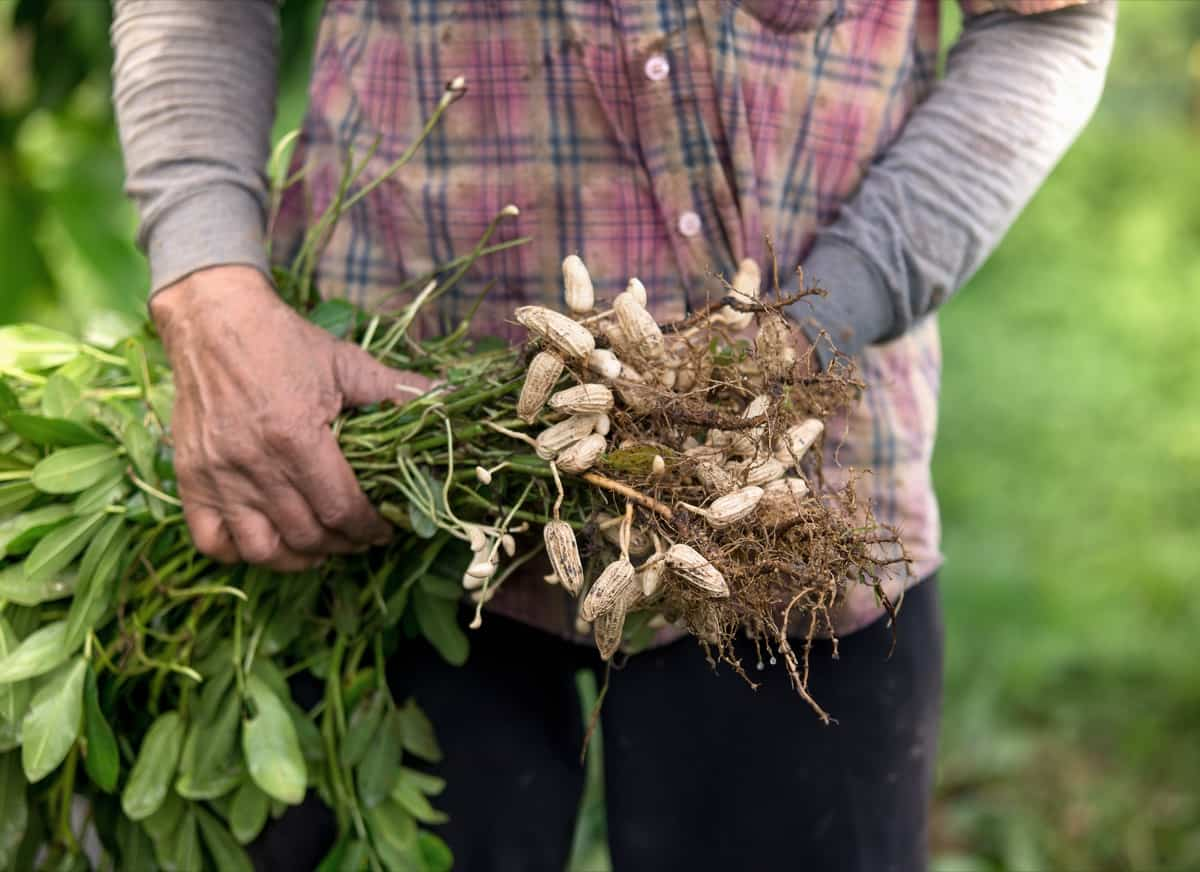
Kadiri 9: Kadiri 9, introduced in 2009 by ANGRAU, Kadiri, is resistant to several pests and diseases. It’s recommended for the kharif season in Andhra Pradesh.
Greeshma (2009): Released by ANGRAU, Tirupati, Greeshma offers a yield potential of 2000-2500 Kg/ha (Rabi) and 4000-4700 Kg/ha (Kharif). It’s well-suited for Andhra Pradesh and is known for its tolerance to late leaf spot (LLS), drought, high temperatures, and aflatoxin. It’s recommended for both kharif and rabi-summer seasons.
Kadiri 7 (2009): Also released by ANGRAU, Kadiri 7 has a yield potential of 1643 Kg/ha and is suitable for Andhra Pradesh. This variety is tolerant to sucking pests and leaf spots and features bold seeds (HSM = 65-75 g). It’s recommended for the kharif season.
Kadiri 8 (2009): Another variety from ANGRAU, Kadiri 8, has a yield potential of 1523 Kg/ha and is also suitable for Andhra Pradesh. Like Kadiri 7, it’s tolerant to sucking pests and leaf spots and features bold seeds (HSM = 65-75 g).
Mallika (ICHG 00440) (2009): Released by RAU, Hanumangarh, Mallika has a yield potential of 2579 Kg/ha. It’s resistant to collar rot and peanut bud necrosis disease (PBND) and features bold seeds (HSM = 73 g). This variety is recommended for the kharif season and is suitable for cultivation all over India.
TGLPS 3 (TDG-39) (2009): Introduced by UAS, Dharwad, TGLPS 3 offers a yield potential of 2500-3000 Kg/ha and is suitable for Karnataka.
GG 21 (JSSP 15) (2009): Released by JAU, Junagadh, GG 21 has a yield potential of 1843 Kg/ha and is recommended for Uttar Pradesh, Punjab, and northern Rajasthan.
JSP 39 (2009): Developed by UAS Dharwad, JSP 39 offers a high yield potential of 3000 Kg/ha. It suits Andhra Pradesh, Karnataka, Tamil Nadu, and Maharashtra. This variety is known for its tolerance to foliar diseases and root rot.
JL 501 (2010): Released by MPKV, Jalgaon, JL 501 has a yield potential of 1661 Kg/ha. It’s suitable for Gujarat and southern Rajasthan and is known for its adaptability to early and late-sown rainfed conditions.
Vijetha (R 2001-2) (2010): Developed by UAS, Raichur, Vijetha offers a yield potential of 1600 Kg/ha. It’s recommended for West Bengal, Odisha, Jharkhand, Maharashtra, Karnataka, Andhra Pradesh, and Tamil Nadu. This variety is resistant to PBND and is recommended for the rabi-summer season.
HNG 69 (2010): Released by RAU, Hanumangarh, HNG 69 offers a high yield potential of 2800 Kg/ha and is suitable for Uttar Pradesh, Punjab, and northern Rajasthan. It’s known for its tolerance to collar rot, stem rot, and ELS, making it a great choice for the kharif season.
High-yielding Groundnut Varieties in India for Improved Profits
Rak Mungfali-2 (RG 578) (Kharif) (2015)
- Yield: 1480 Kg/ha
- Special Features: Resistant to late leaf spot (LLS), dry root rot, Early Leaf Spot (ELS), and rust. It’s also tolerant to S. litura, thrips, jassids, and leaf miners.
GJG-18 (JSP-49) (Kharif) (2015)
- Yield: 1450 Kg/ha
- Special Features: Moderately resistant to Peanut Bud Necrosis Disease (PBND) and Peanut Stem Necrosis Disease (PSND). Suitable for Odisha, West Bengal, Jharkhand, and Manipur.
In case you missed it: Best Fertilizer for Groundnut: Organic, NPK, Compost Manure, and Schedule
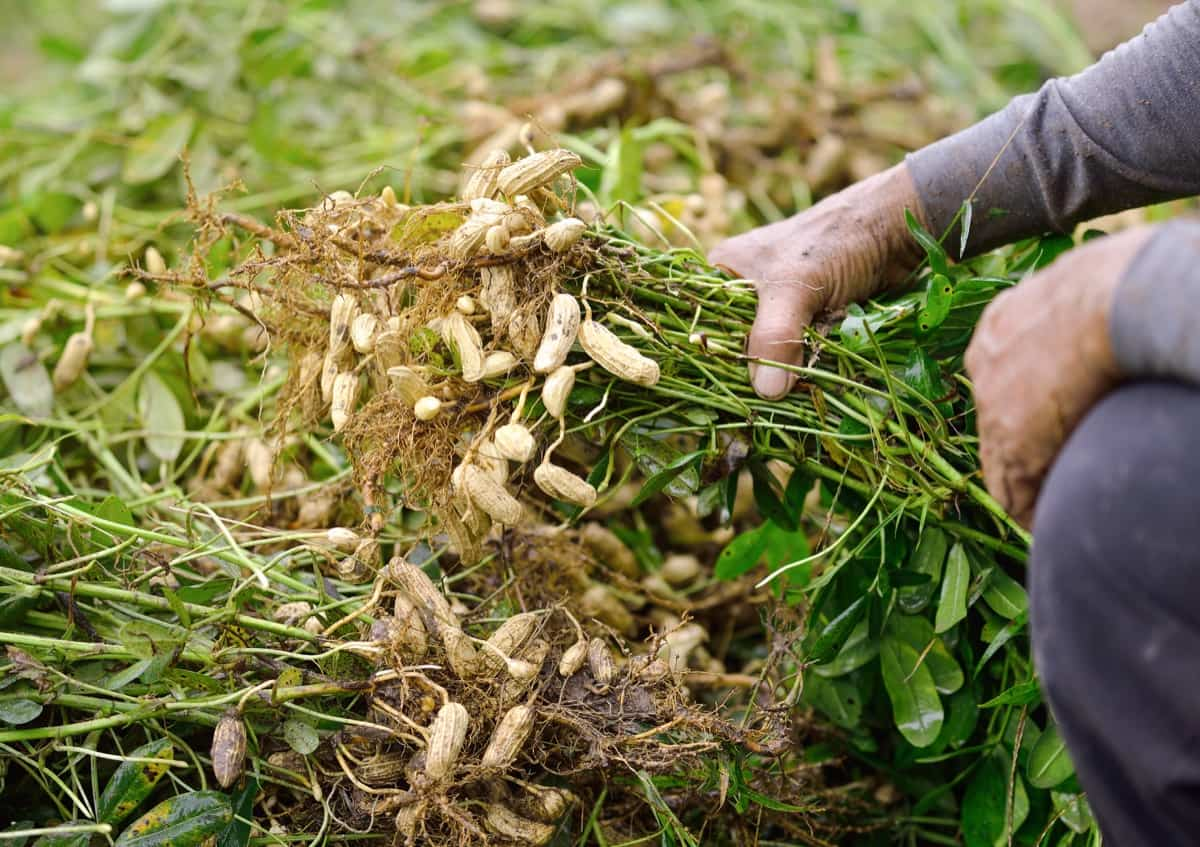
Phule Bharti (JL-776) (Kharif) (2015)
- Yield: 2110 Kg/ha
- Special Features: Resistant to Spodoptera litura and rust in field conditions. Recommended for Maharashtra and Madhya Pradesh.
Groundnut Raj Mung-3 (RG-559-3) (Kharif) (2016)
- Yield: 3173 Kg/ha
- Special Features: Tolerant to S. litura, leafminer, and thrips, known for its high-yielding large seeds. It is ideal for Rajasthan, UP, and Punjab.
Phule Warna (KDG-128) (Kharif) (2016)
- Yield: 2425 Kg/ha
- Special Features: Moderately resistant to rust and leaf spot. It is well-suited for Tamil Nadu, Andhra Pradesh, Karnataka, southern Maharashtra, Gujarat, and Rajasthan.
KCG-6 (CTMG 6) (Rabi/Summer) (2016)
- Yield: 3663 Kg/ha
- Special Features: Moderately resistant to rust and late leaf spot, making it a great choice for Karnataka.
GKVK-5 (Kharif, Summer) (2016)
- Yield: 2500-2800 Kg/ha
- Special Features: Moderately resistant to rust and Late Leaf Spot (LLS), as well as drought-tolerant. It’s suitable for southern Karnataka.
Phule Morna (KDG-123) (Kharif) (2016)
- Yield: 2212 Kg/ha
- Special Features: Moderately resistant to rust and leaf spot, making it a valuable option for Gujarat, Rajasthan, Odisha, West Bengal, Jharkhand, Manipur, Tamil Nadu, Andhra Pradesh, Karnataka, and southern Maharashtra.
Central Groundnut ALG-06-320 (Rabi/Summer) (2017)
- Yield: 2741 Kg/ha
- Special Features: Tolerant to rust, Late Leaf Spot (LLS), and Peanut Bud Necrosis Disease (PBND). It also shows resistance to S. litura, leaf miners, and thrips. It is ideal for Tamil Nadu and Andhra Pradesh.
VRI-8 (VG-09220) (Kharif/Summer) (2017)
- Yield: 2130 Kg/ha (Kharif), 2700 Kg/ha (Rabi/Summer)
- Special Features: Moderately resistant to sucking pests (jassids and thrips), moderately resistant to Late Leaf Spot (LLS) and rust. Suited for Tamil Nadu.
Guj Jun Groundnut-32 (GJG-32) (Kharif) (2018)
- Yield: 3715 Kg/ha
- Special Features: Tolerant to stem rot, collar rot, dry root rot, foliar fungal diseases (rust, early leaf spot), and PBND. It’s also tolerant to Helicoverpa & Spodeptera leaf damage, with high oil content.
Dheeraj (TCGS 1073) (Kharif & Summer) (2019)
- Yield: K-2547 (Kharif), Rabi-3690 (Rabi)
- Special Features: A Spanish Bunch variety with maturity in 105-115 days, heat tolerance, and high water use efficiency. Suited for Andhra Pradesh.
BSR 2 (BSG 0912) (INS I 2013-8) (Kharif/Rabi-Summer) (2019)
- Yield: RF-2222 (Kharif), Irr-2360 (Rabi/Summer)
- Special Features: Moderately resistant to leaf spot and rust, making it a great choice for Tamil Nadu.
In case you missed it: Ways Groundnut Farming Can Make You Rich in Short Time
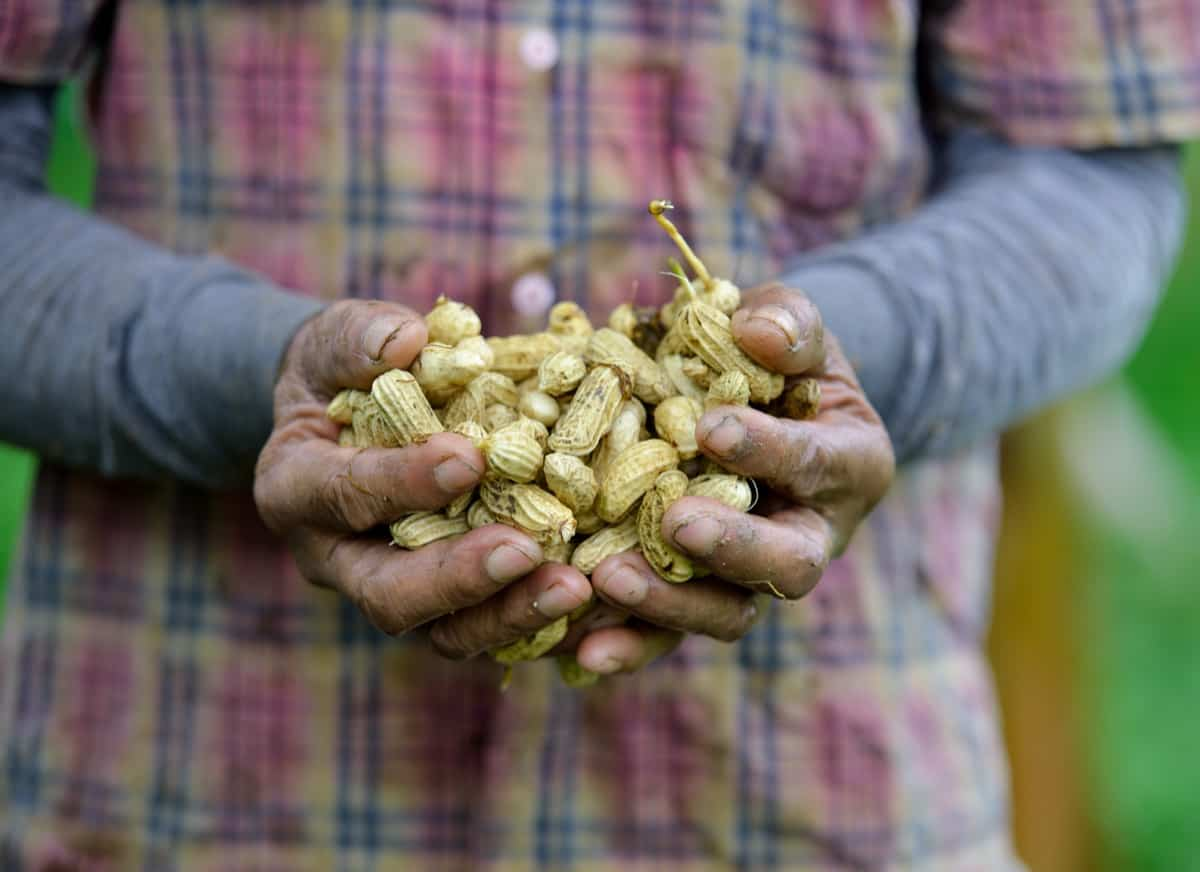
Phule Dhani (JL 1085) (Kharif) (2019)
- Yield: 3333 Kg/ha
- Special Features: Resistant to foliar diseases and resistance to Spodoptera and thrips. Recommended for Tamil Nadu, Andhra Pradesh, and Karnataka.
Phule Unnati (RHRS-6083) (Kharif/Rabi-Summer) (2019)
- Yield: 2854 Kg (Kharif), 3990 Kg (Rabi/Summer)
- Special Features: Tolerant to leaf spot (Tikka), stem rot, rust, Spodoptera, and thrips. It typically has 2-3 seeds per pod and offers high oil content. Suited for Maharashtra.
DH-232 (2019)
- Yield: 1480 to 2340 Kg/ha.
- Special Features: This variety is characterized by its tolerance to foliar diseases such as Late Leaf Spot (LLS) and rust. It is particularly well-suited for cultivation in Karnataka, where these diseases can be prevalent.
DH-245 (2019)
- Yield: 1480 to 2340 Kg/ha.
- Special Features: DH-245 is notable for its high oleic content and resistance to diseases like Late Leaf Spot (LLS) and rust. This variety is particularly suitable for Karnataka, offering a valuable combination of high oil content and disease tolerance.
Phule Chaitanya (KDG-160) (2019)
- Yield: 3400 Kg/ha.
- Special Features: This variety is well-suited for Rabi summer cultivation and exhibits moderate resistance to stem rot and late leaf spot disease. Phule Chaitanya comes highly recommended for cultivation in Andhra Pradesh, Tamil Nadu, and Telangana.
Konkan Bhuratna (RTNG-29) (2019)
- Yield: 2500 to 3000 Kg/ha.
- Special Features: It is known for its resistance to leaf spots, rust, Peanut Bud Necrosis Disease (PBND), alternaria, thrips, jassids, leaf miners, and defoliating insects and pests. This variety is an excellent choice for farmers in Maharashtra.
PDKVG 335 (AK-335) (2019)
- Yield: 2570 Kg/ha.
- Special Features: This variety is well-suited for rainfed ecology and demonstrates moderate resistance to various issues, including tikka, collar rot, stem rot, jassids, thrips, and aphids. It is particularly recommended for cultivation in Maharashtra.
Gujarat Groundnut HPS2 (GGHPS 2) (2019)
- Yield: GGHPS 2 can provide a yield of 2835 Kg/ha.
- Special Features: It is known for its resilience to stem rot, collar rot, and rust, making it an ideal choice for cultivation in Gujarat.
In case you missed it: Groundnut Seed Germination, Time, Temperature, Process
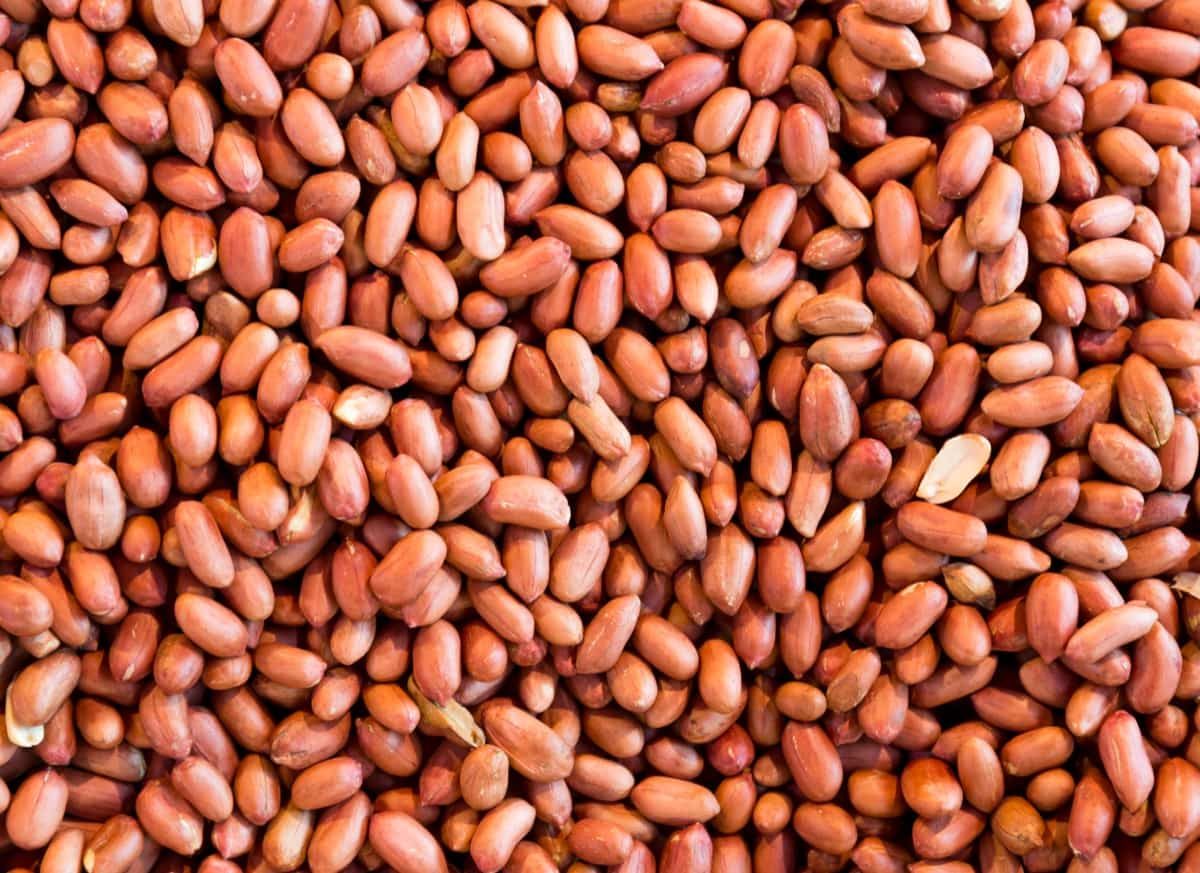
Central Pragati (TCGS-894) (2020)
- Yield: 2816 Kg/ha
- Special Features: A Spanish Bunch variety with high yield and high shelling (70%). It matures in 115 days and suits Andhra Pradesh, Tamil Nadu, and Telangana.
Dh256 (2020)
- Yield: 3258 Kg/ha
- Special Features: Tolerant to rust, LLS, spodoptera, and thrips. Drought-resistant and known for small green leaves, pods with moderate constriction, tan-colored kernels, and shelling at 73%.
TMV-14 (2019)
- Yield: K-2129 (Kharif), R-2280 (Rabi)
- Special Features: Moderately resistant to rust, LLS disease, and less incidence of Spodoptera litura, thrips, and leaf miners. Suitable for Tamil Nadu.
Best State-wise Varieties for Groundnut in India: Hybrid Cultivars for Improved Yield
| Andhra Pradesh | Ajeya, ICGV 00348, VRI (Gn) 6, Kadiri 7, Greeshma | |
| Assam | TG 51, Mallika | |
| Bihar | Mallika | |
| Chhattisgarh | Mallika | |
| Delhi | Mallika | |
| Gujarat | Mallika, JL 501, GJG-HPS-1 | |
| Haryana | Mallika | |
| Himachal Pradesh | Mallika | |
| Jharkhand | TG 51, Mallika, Vijetha | |
| Karnataka | Ajeya, ICGV 00348, VRI (Gn) 6, Mallika | |
| Madhya Pradesh | Jawahar Groundnut 23, Mallika, ALG-06-320 | |
| Maharashtra | Ajeya, ICGV 00348, VRI (Gn) 6, Mallika | |
| Odisha | TG 51, Mallika, Vijetha | |
| Punjab | Girnar 2, Utkarsh, Mallika | |
| Rajasthan | TG-39, Girnar 2, Utkarsh, Mallika | |
| Tamil Nadu | Ajeya, ICGV 00348, VRI (Gn) 7, Mallika | |
| Uttrakhand | VL-Moongphali-1, Mallika | |
| Uttar Pradesh (Except BKD) | Girnar 2, Utkarsh, Mallika | |
| Bundelkhand | Mallika | |
| West Bengal | TG 51, Mallika, Vijetha | |
| North Eastern Hill States | Mallika, Girnar 3, GPBD-5 |
High-Oleic Acid Groundnut Varieties in India
Two groundnut varieties, Girnar 4 (ICGV 15083) and Girnar 5 (ICGV 15090), were recently introduced to India by Prime Minister Narendra Modi. These biofortified groundnuts are special because they contain a remarkable 80% oleic acid, unlike regular varieties with only 45-50% oleic acid.
In case you missed it: Top 10 Best Tractor Mounted Sprayers in India: Price List Included
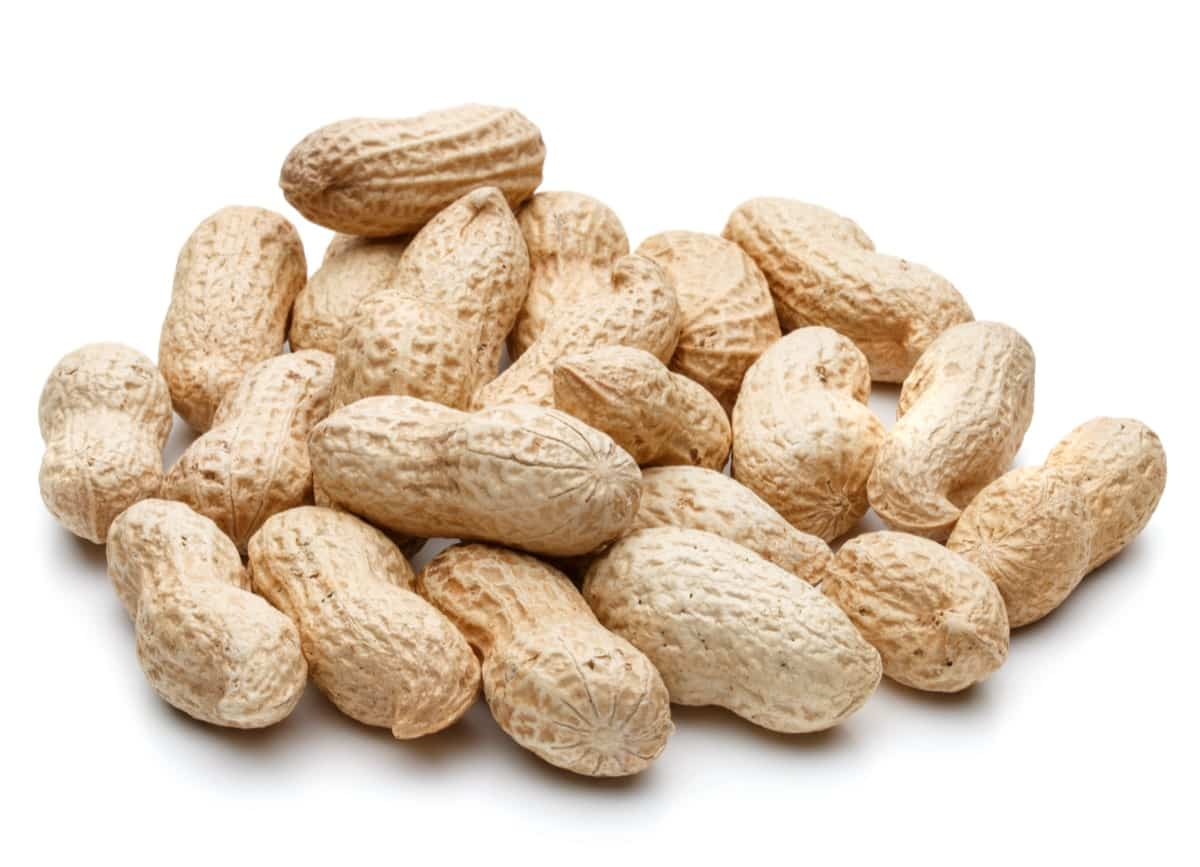
The high oleic acid content in these groundnuts is fantastic for your health. It results in lower LDL cholesterol levels, often called ‘bad’ cholesterol, while keeping the ‘good’ HDL cholesterol levels intact. This makes Girnar 4 and Girnar 5 a healthier choice for consumers. Additionally, the increased oleic acid levels help extend the shelf life of these groundnuts, which is a significant advantage, especially for the confectionery industry.
These two varieties, Girnar 4 and Girnar 5, take around 110-113 days to mature and are well-suited for cultivation in several Indian states, including Gujarat, Rajasthan, Andhra Pradesh, Karnataka, and Tamil Nadu. Girnar 4 outperformed the TG 37A and GPBD 4 check varieties in national testing trials. It produced 41% more dry pods and 57% more kernels than TG 37A and GPBD 4. Girnar 5 also excelled, with 37% and 53% higher dry pod yields and 34% and 54% higher kernel yields than TG 37A and GPBD 4, respectively.
This incredible achievement was possible due to collaboration with various institutions, including ICAR-DGR, the National Mission for Oilseeds and Oil Palm (NMOOP), Junagadh Agricultural University, Tamil Nadu Agricultural University, and more. Importantly, the development of these superior groundnut varieties received support from the OPEC Fund for International Development (OFID) and the CGIAR Research Program on Grain Legumes and Dryland Cereals (CRP GLDC).
Conclusion
Cultivating high-yielding groundnut hybrid cultivars in India presents a promising avenue for farmers to boost their profits. These varieties offer increased yields and valuable traits, contributing to the economic success of groundnut farming.
- Types of Pesticides Used in Agriculture: A Beginner’s Guide
- Economical Aquaculture: A Guide to Low-Budget Fish Farming
- 15 Common Planting Errors That Can Doom Your Fruit Trees
- How to Make Houseplants Bushy: Effective Tips and Ideas
- Innovative Strategies for Boosting Coconut Pollination and Yield
- Pollination Strategies for Maximum Pumpkin Yield
- The Complete Guide to Chicken Fattening: Strategies for Maximum Growth
- Natural Solutions for Tulip Problems: 100% Effective Remedies for Leaf and Bulb-Related Issues
- Revolutionizing Citrus Preservation: Towards a Healthier, Greener Future
- Natural Solutions for Peony Leaf and Flower Problems: 100% Effective Remedies
- Maximizing Profits with Avocado Contract Farming in India: A Comprehensive Guide
- Natural Solutions for Hydrangea Problems: 100% Effective Remedies for Leaf and Flowers
- The Ultimate Guide to Choosing the Perfect Foliage Friend: Bringing Life Indoors
- From Sunlight to Sustainability: 15 Ways to Use Solar Technology in Agriculture
- The Ultimate Guide to Dong Tao Chicken: Exploring from History to Raising
- The Eco-Friendly Makeover: How to Convert Your Unused Swimming Pool into a Fish Pond
- Mastering the Art of Delaware Chicken Farming: Essentials for Healthy Backyard Flocks
- 20 Best Homemade Fertilizers for Money Plant: DIY Recipes and Application Methods
- How to Craft a Comprehensive Free-Range Chicken Farming Business Plan
- Brighten Your Flock: Raising Easter Egger Chickens for Beauty and Bounty
- How to Optimize Your Poultry Egg Farm Business Plan with These Strategies
- Subsidy for Spirulina Cultivation: How Indian Government Schemes Encouraging Spirulina Farmers
- Ultimate Guide to Raising Dominique Chickens: Breeding, Feeding, Egg-Production, and Care
- Mastering the Art of Raising Jersey Giant Chickens: Care, Feeding, and More
- Ultimate Guide to Raising Legbar Chickens: Breeding, Farming Practices, Diet, Egg-Production
- How to Raise Welsummer Chickens: A Comprehensive Guide for Beginners
- How to Protect Indoor Plants in Winter: A Comprehensive Guide
- Ultimate Guide to Grow Bag Gardening: Tips, Tricks, and Planting Ideas for Urban Gardeners
- Guide to Lotus Cultivation: How to Propagate, Plant, Grow, Care, Cost, and Profit
- Agriculture Drone Subsidy Scheme: Government Kisan Subsidy, License, and How to Apply Online
- Ultimate Guide to Raising Araucana Chickens: Breed Profile, Farming Economics, Diet, and Care
- Bringing Hydroponics to Classroom: Importance, Benefits of Learning for School Students
- Ultimate Guide to Raising Polish Chickens: Breed Profile, Farming Economics, Diet, and Care
- Ultimate Guide to Raising Australorp Chickens: Profile, Farming Economics, Egg Production, Diet, and Care
- Silkie Chicken Farming: Raising Practices, Varieties, Egg Production, Diet, and Care
- Sussex Chicken Farming: Raising Practices, Varieties, Egg Production, Diet and Care